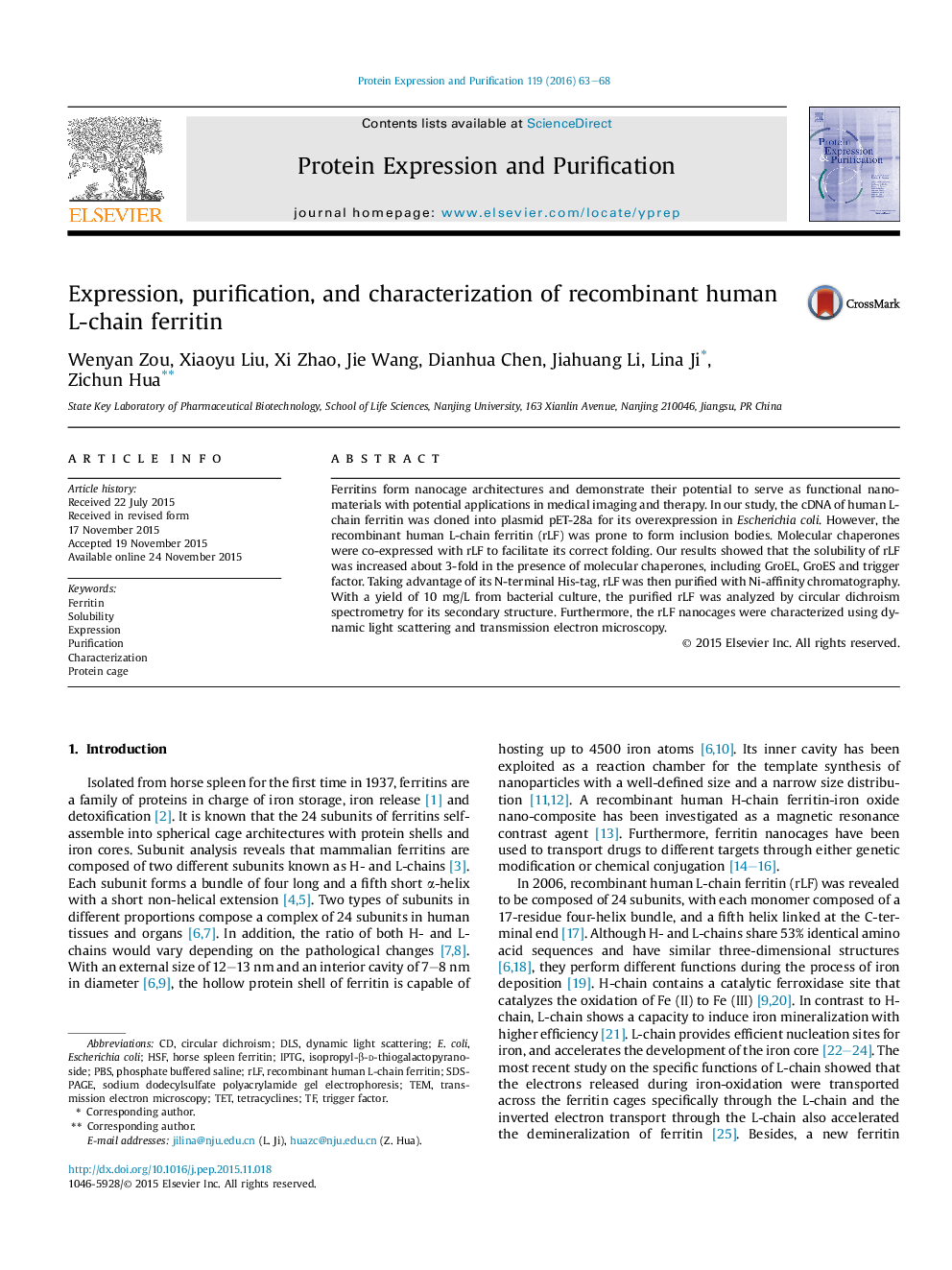| Article ID | Journal | Published Year | Pages | File Type |
|---|---|---|---|---|
| 8359854 | Protein Expression and Purification | 2016 | 6 Pages |
Abstract
Ferritins form nanocage architectures and demonstrate their potential to serve as functional nanomaterials with potential applications in medical imaging and therapy. In our study, the cDNA of human L-chain ferritin was cloned into plasmid pET-28a for its overexpression in Escherichia coli. However, the recombinant human L-chain ferritin (rLF) was prone to form inclusion bodies. Molecular chaperones were co-expressed with rLF to facilitate its correct folding. Our results showed that the solubility of rLF was increased about 3-fold in the presence of molecular chaperones, including GroEL, GroES and trigger factor. Taking advantage of its N-terminal His-tag, rLF was then purified with Ni-affinity chromatography. With a yield of 10Â mg/L from bacterial culture, the purified rLF was analyzed by circular dichroism spectrometry for its secondary structure. Furthermore, the rLF nanocages were characterized using dynamic light scattering and transmission electron microscopy.
Keywords
DLSE. colihsfTETPBSRLFIPTGEscherichia coliExpressionSDS-PAGEsodium dodecylsulfate polyacrylamide gel electrophoresisSolubilityisopropyl-β-d-thiogalactopyranosideTemTetracyclinesCharacterizationcircular dichroismtrigger factorhorse spleen ferritinFerritinPhosphate buffered salineProtein cageTransmission electron microscopyPurificationDynamic Light Scattering
Related Topics
Life Sciences
Biochemistry, Genetics and Molecular Biology
Biochemistry
Authors
Wenyan Zou, Xiaoyu Liu, Xi Zhao, Jie Wang, Dianhua Chen, Jiahuang Li, Lina Ji, Zichun Hua,
